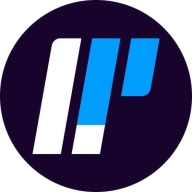

Check Point Harmony Endpoint and Logpoint compete in the cybersecurity solutions category. Check Point Harmony Endpoint seems to have the upper hand in terms of pricing and support, while Logpoint is favored for its advanced features.
Features: Check Point Harmony Endpoint boasts comprehensive threat detection, malware protection, and easy integration. Logpoint is known for advanced analytics, extensive customizability, and detailed security reports.
Room for Improvement: Check Point Harmony Endpoint lacks seamless product integration, has inadequate reporting functionalities, and requires a more intuitive interface. Logpoint has a steep learning curve, insufficient documentation, and complex initial setup.
Ease of Deployment and Customer Service: Check Point Harmony Endpoint has straightforward deployment and responsive support. Logpoint's deployment is more complex but provides detailed guidance and thorough assistance.
Pricing and ROI: Check Point Harmony Endpoint is cost-effective with positive ROI feedback, particularly benefiting small to medium businesses. Logpoint, while more costly, is considered worth the investment for larger enterprises seeking detailed security analytics.
The product is affordable and provides excellent coverage and protection across multiple platforms.
Only email support is available, leading to delays in getting assistance.
Their support was helpful enough for me to give them a seven out of ten.
The technical support for Logpoint is very good, and I would rate it as nine out of ten.
Logpoint's customer support is not sufficient with only one engineer in the US.
Check Point Harmony Endpoint is scalable, suitable for both small and large companies.
It possesses high scalability because it is a SaaS solution from the cloud, allowing expansion as needed.
It is web-based and accommodates the expansion of our organization.
Logpoint is scalable and capable of expanding.
The stability of the tool is high, as I have not experienced any downtime.
I have received reports indicating glitches and downtimes with Logpoint.
Better technical support would enhance the product's competitiveness.
One area that requires improvement is the amount of audit logs the system can save, as it is currently limited to fourteen days.
Dealing with foreign entities for support was a challenge, leading us to switch providers due to lack of adequate support.
Logpoint needs to be cloud-native, as currently, it is not.
It is not expensive and provides comprehensive coverage.
Pricing is a bit expensive but justified by the product’s features, capabilities, and scalability.
I rate the pricing at eight, suggesting it's relatively good or affordable.
Endpoint protection is valuable.
Harmony Endpoint has a geo policy that allows me to see where users log in from, enabling me to analyze if someone tries to access an account from another location.
The UEBA enables us to monitor at the device level, and SOAR provides playbooks and templates that we can modify and incorporate into the platform.
It effectively facilitates logging and log storage and assists in security event management by ingesting security events.


Check Point Harmony Endpoint integrates security solutions, allowing comprehensive protection against cyber threats. It's designed to suit enterprise-scale operations with robust features for threat prevention and management.
Check Point Harmony Endpoint offers advanced security capabilities that prioritize threat analysis, detection, and prevention. Tailored for professional environments, it provides tools to handle endpoint vulnerabilities effectively. Its user-centric design ensures that IT teams can manage network security with streamlined operations. Continuous updates and threat intelligence are offered to counter emerging threats, and its deployment is optimized for ease of use.
What are the key features of Check Point Harmony Endpoint?In specific industries like finance and healthcare, Check Point Harmony Endpoint is deployed to secure sensitive data and protect against sector-specific threats. Its flexibility allows adaptation to meet industry standards, ensuring critical infrastructures maintain operational security without hindrance.
Logpoint is a cutting-edge security information and event management (SIEM) solution that is designed to be intuitive and flexible enough to be used by an array of different businesses. It is capable of expanding according to its users' needs.
Benefits of Logpoint
Some of the benefits of using Logpoint include:
Reviews from Real Users
Logpoint is a security and management solution that stands out among its competitors for a number of reasons. Two major ones are its data gathering and artificial intelligence (AI) capabilities. Logpoint enables users to not only gather the data, but also to maximize both the amount of data that can be gathered and its usefulness. It removes many of the challenges that users may face in data collection. The solution allows users to set rules for collection and then it pulls information from sources that meet the rules that have been set. This data is then broken into manageable segments and ordered. Users can then analyze these ordered segments with ease. Additionally, LogPoint utilizes both machine learning and AI technology. Users gain the ability to protect themselves from and if necessary resolve emerging threats as soon as they arise. The AI sets security parameters for a user’s system. These act as a baseline that are triggered and notify the user if anything deviates from the rules that it set up.
The chief infrastructure & security officer at a financial services firm writes, “It is a very comprehensive solution for gathering data. It has got a lot of capabilities for collecting logs from different systems. Logs are notoriously difficult to collect because they come in all formats. Logpoint has a very sophisticated mechanism for you to be able to connect to or listen to a system, get the data, and parse it. Logs come in text formats that are not easily parsed because all logs are not the same, but with Logpoint, you can define a policy for collecting the data. You can create a parser very quickly to get the logs into a structured mechanism so that you can analyze them.”
A. Secca., a Cyber Security Analyst at a transportation company, writes, “It is an AI technology because it is using machine learning technology. So far, there is nothing better out there for UEBA in terms of monitoring endpoints and user activity. It is using machine learning language, so it is right at the top. It provides that capability and monitors all of the user’s activities. It devises a baseline and monitors if there is any deviation from the baseline.”
We monitor all Endpoint Detection and Response (EDR) reviews to prevent fraudulent reviews and keep review quality high. We do not post reviews by company employees or direct competitors. We validate each review for authenticity via cross-reference with LinkedIn, and personal follow-up with the reviewer when necessary.